
Field House
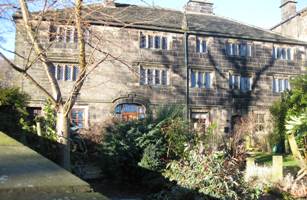
In 1307 a Thomas de Feyld was living at Sowerby, although we do not know whereabouts, but it is recorded that over 200 years later, on May 14th 1528 Thomas Felde surrendered one acre of land with the buildings thereon in the graveship of Sowerby in a lane called Feldhouseloyne to... [6 men]. Thomas Felde... he was probably a younger member of the family of Feld of Field House...2
The Stansfelds were a family of considerable repute who took their name from their situation. The original one of them was Wyon Marions, probably of Norman extraction, and in all likelihood a follower of the Earl Warren upon whom the lordship of Hardwick also known as Sowerbyshire was bestowed.
In Calderdale there are many good 17th century houses and big mill-owners' houses, but Field House, an 18th century Georgian house of this size is quite unusual.
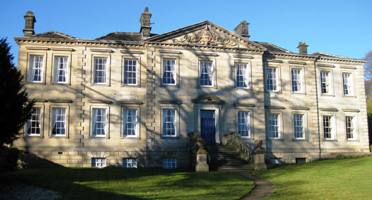
A Palladian-style house was built alongside The Old Field Hall for George Stansfeld in 1749. The Stansfeld coat of arms and the motto "Know thyself" can be seen on the pediment. This house is the "Field House" as described below.
When the old Church at Sowerby was pulled down, George Stansfeld, who was a major contributor to the new Church, expressed a desire to purchase parts of the old building and preserve them in his recently built hall as an extension. Among the parts removed to Field house were the belfry, a fine gothic arch from the east window which was divided into 27 lights by finely carved mullions having a circular light in the centre of the arch.
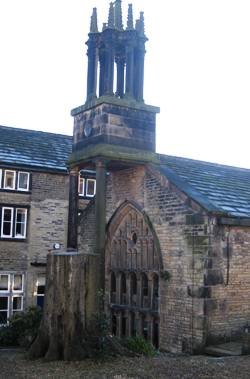
I'll now try to describe the grounds as approached through the Dean Lane entrance, but prior to that have to mention the carriage drive which provided easier access to the hall from Rochdale Road rather than the Butterworth lane road which was too steep.
The entrance to the drive was at the gatehouse in Rochdale road which also provided access to "The Brecks" another old house on the hillside; the drive wound its way past The Brecks and finished with another ornate gateway opposite the dean lane entrance to Field House.
When entering the grounds of Field House through the Dean lane entrance the house is on the left with a widening drive leading up to the house's side entrance which is on the left, when Mr & Mrs Stansfeld held an open day they brought out their parrot in it's large cage and placed it on a plinth outside this door. Walking straight forward takes us through an archway that leads up to a small flight of steps terminating with a small circular fountain, here on the left hand side are the rescued remains of the old Sowerby Church with the bell tower placed above the rose window on the two enormous columns.
The area we are now standing in is the stabling and garage forecourt, the carriages and their Armstrong Siddeley saloon car were in garages on the right hand side, whilst a cottage and the stables were straight ahead, proceeding straight forward took us up some more steps through the stable block to the well tended kitchen gardens, at the right hand end of these gardens was a well stocked heated greenhouse with lots of exotic blooms.
Returning to the front garden and lawns where St Peter's Sunday school had their Whitsuntide treats, we go on a path to the left through some trees; this led us to the boating lake, complete with boathouse and a rowing boat, quite a picturesque spot in the summer sunshine. Below the boating lake there were two full size grass tennis courts and below that was a garden with footpaths laid out it also had a magnificent Horse Chestnut tree whose branches had taken root (we were told that this was quite a rare occurrence)
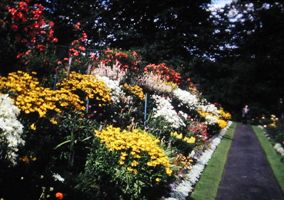
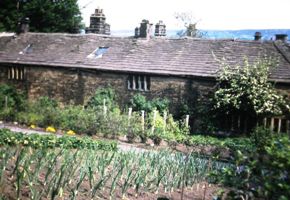
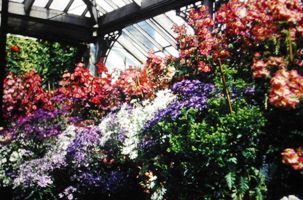
All in all Field House, the gardens and facilities was a place not to be missed when opened to the public during the summer months in aid of The British Red Cross
1. John Watson - History of Halifax
2. E.W. Crossley - Chantry Endowments (Halifax Antiquarian Society 1909)
2. E.W. Crossley - Chantry Endowments (Halifax Antiquarian Society 1909)
Article by John Kerridge